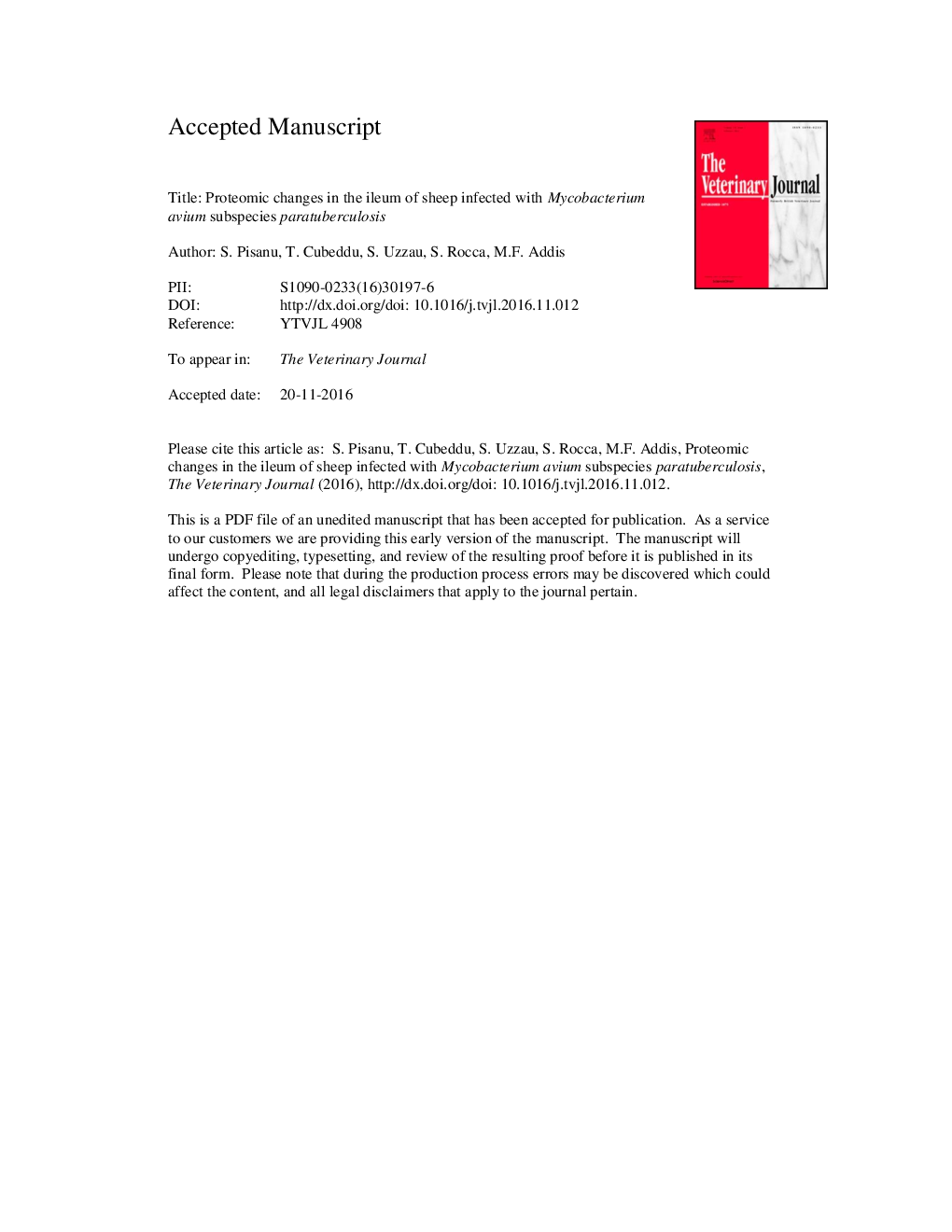| Article ID | Journal | Published Year | Pages | File Type |
|---|---|---|---|---|
| 5545028 | The Veterinary Journal | 2017 | 12 Pages |
Abstract
Johne's disease (JD) is a chronic enteritis of ruminants caused by Mycobacterium avium subspecies paratuberculosis (MAP). To identify the processes activated in the sheep intestine during natural MAP infection, and to provide a panel of differential host and pathogen proteins with diagnostic and prognostic potential, a differential shotgun proteomics workflow, including mass spectrometry, label-free quantisation and pathway analysis, was applied to ileal tissues of ewes with and without JD. Out of 2889 total proteins identified, 384 were differentially expressed and 341 were expressed at a higher level in JD. On the basis of Search Tool for the Retrieval of Interacting Genes/Proteins (STRING) analysis, these proteins were involved in numerous relevant biological networks and Kyoto Encyclopedia of Genes and Genomes (KEGG) pathways, including inhibition of phagosome acidification (such as V-ATPase), bacterial invasion, leucocyte recruitment and activation, and antimicrobial activity (such as haptoglobin, lactoferrin, cathelicidins, calgranulins and interleukins). A total of 28 MAP proteins were identified, including bacterioferritin, β-lactamase and heparin-binding haemagglutinin (HBHA), a mycobacterial adhesin crucial for dissemination of infection.
Keywords
Related Topics
Life Sciences
Agricultural and Biological Sciences
Animal Science and Zoology
Authors
S. Pisanu, T. Cubeddu, S. Uzzau, S. Rocca, M.F. Addis,
